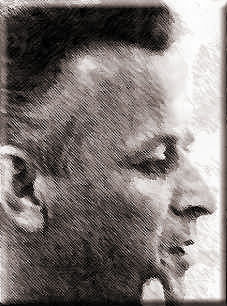"Bullet, bullet, who's got the bullet?"
REPRESENTING JAMES EARL RAY
"Bullet, bullet, who's got the bullet?"
![]()
|
I represented Ray at a crucial period, during the investigative hearings conducted by the U.S. Congress Select Committee on Assassinations.
|
|
|
The committee's objective was a thorough examination of the King
and Kennedy assassinations, in order to resolve all suspicions of conspiracy.
Not surprisingly, this never happened.
At Brushy Mountain State Prison, where Ray was incarcerated during the summer of 1977, the first hearing was convened, and we were treated to a rousing speech by Mr. Sprague, counsel to the Committee, who assured us that the truth and only the truth was our goal. I felt uplifted - for a day or two. |

|
As we prepared to begin our examination of Ray, there was a general demurral to my reel-to-reel tape recording equipment, but I insisted that it remain, and I taped the entire proceedings. I understand that Congress has sealed their records; mine, however, remain available.
Ray was completely cooperative, and many leads were produced. A few were thoroughly investigated. Many more were not. |
|
Early on I expressed an interest in the ballistics test. I was told that the weapon was in storage and the bullet was too damaged to calibrate. I made a formal demand that the bullet be produced and a thorough examination be done; if indeed the bullet was too damaged to examine, let the ballistics experts say so.
Counsel finally reluctantly agreed, and a panel of five outstanding ballistics experts convened in Washington. I questioned each of them individually, showing them the mushroomed bullet. "Is there enough bullet present here to allow you to accurately measure, and declare in a court of law whether or not this bullet came from that gun, and no other gun in the world?" Each of them assured me that the bullet could indeed be tested. They retired with the bullet certified to be the one removed from King's neck, and the gun Ray admitted owning. Within a week they made their report. Not a single one of the experts would say that the bullet that killed King came from Ray's gun. The verdict of the five ballistics experts had shifted the burden of proof. Ray could no longer bear the burden of a guilty plea. The presumption of innocence was now his. A hearing on the merits was now required. |
|
The State does not have the murder weapon, and the bullet has led a very strange life.
When William Pepper, the English lawyer, conducted his "conspiracy trial" at Memphis, I asked him about the bullet. "Oh, it's in pristine shape," he told me. Pristine? How did that badly-malformed bullet snap back into perfect shape? And then later, things got "curiouser and curiouser." I was informed by a Memphis official that the bullet was in three pieces, and could not be handled. "Bullet, bullet, who's got the bullet?" |
![]()